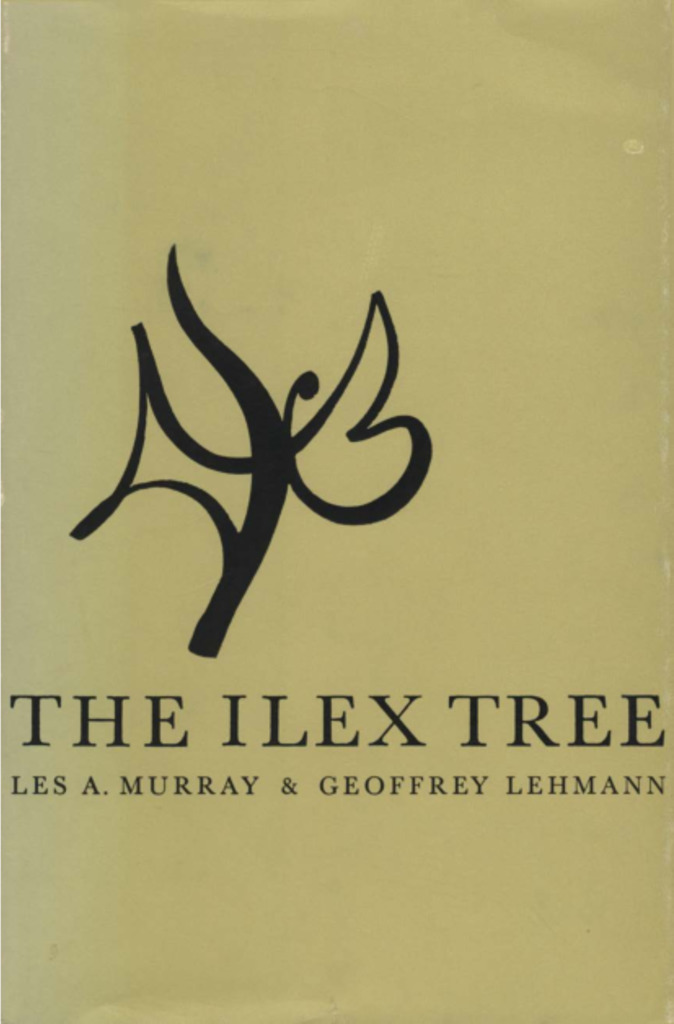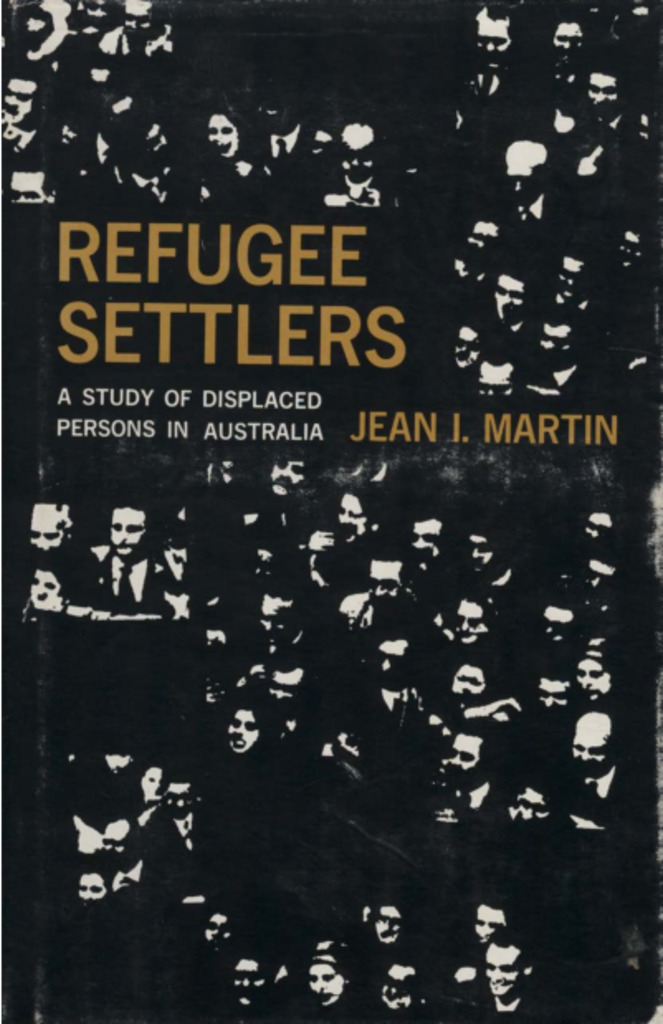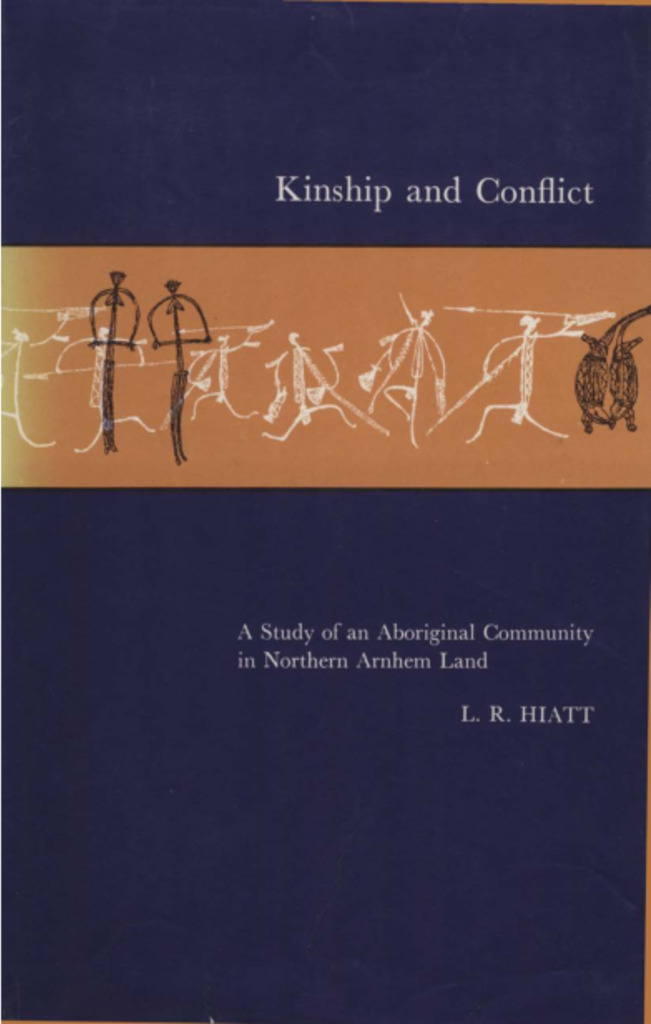Authors & editors
ANU Press has collaborated with a diverse range of authors and editors across a wide variety of academic disciplines. Browse the ANU Press collection by author or editor.

The ilex tree »
Publication date: 1965
Les A. Murray and Geoffrey Lehmann are two young Australian poets whose work has recently begun attracting attention. Both write enjoyably, preferrring lucidity and clarity of image. Les Murray works from a deep attachment to countryside and the past; his earlier work is concerned largely with imagined situations and modes of existence, especially war, but more recently he has come to explore a more immediate world of his own experience, and his verse has become tenderer and more natural. Geoffrey Lehmann, on the other hand, is a poet of city and sea. He prefers legend and mask to direct lyrical statement, but his elegant surfaces conceal much in tensity of feeling. The two poets have been good friends for several years, and this book is, in part, a result of their friendship.

Refugee settlers: a study of displaced persons in Australia »
Publication date: 1965
In 1953 Dr Jean Martin went to live in a Migrant Hostel in {u2018}Burton{u2019},' the name she gives to one of Australia{u2019}s larger provincial cities. Amongst the Displaced Persons in the Hostel and in the town, she found much of pain, bewilderment, suspicion, and fear, but {u2018}looking back now, I think that the patience, friendliness, and trust shown to me were quite remarkable, considering how time-consuming, impertinent, and even frivolous my inquiries must at times have seemed{u2019}. In 1962 she set out to locate the people she had known at that time, now scattered through two states, to find out what changes had taken place in their lives and attitudes since she had worked among them. Dr Martin{u2019}s purpose was to see the extent to which Australia{u2019}s Displaced Person had been assimilated into the community: how far they had learned new patterns of behaviour, and adopted new values and norms and assumed new roles; to what extent they had come {u2018}to feel a sense of belonging in the new society, with all that this implies in terms of self-perceptions, allegiances, and responsibilities; and [to find] satisfaction in these new activities and loyalties{u2019}. In her compassionate and objective study, in the course of which she chronicles in detail some of the migrants{u2019} life histories, Dr Martin raises a number of problems about the migrants{u2019} relations with their hosts - both as individuals and as members of organizations - which should prod thoughtful Australians into serious consideration and reassessment of their attitudes to their immigrant settlers.

Kinship and conflict: a study of an aboriginal community in northern Arnhem Land »
Publication date: 1965
This is a study of kinship and conflict among a group of Aborigines who only recently abandoned their nomadic existence to live on a government settlement. Given the current rate of change in Australia, it will be among the last first-hand accounts of traditional Aboriginal social life. The book has two main aims. The first is to correct the impression that Aborigines are automata mechanically following tribal law in everything they do, or, as it has been put recently, 'algebraic electronic computets ticking away with no problem to solve. The second is to present for the first time a systematic analysis of disputes in an Aboriginal community, most of them over women. Far more is known, and written, about Australian social organizations than about clashes of interest within them. The author demonstrates clearly that a better knowledge of the second subject might have prevented misunderstandings about the first. The fact that this is a work of scholarship does not prevent the essential drama of these complex situations from showing through. The author's use of diagram to illuminate the different relationships is particularly useful.

The French socialists and tripartisme 1944-1947 »
Publication date: 1965
This book is concerned with a period of post-war economic recovery and political change when Socialists, Communists, Christian Democrats, and - until January 1946 - General de Gaulle were forced to work together to carry out basic reforms and draw up the Constitution of the Fourth French Republic. The alliance forged in the Resistance during the war became an alliance subject to political stresses and strains in which the Socialists were the mediators between, on the one hand, the Christian Democrats and the Communists, and, on the other, General de Gaulle. In an alliance government, conflict of party ideas and ideals seems inevitable. The Socialist leaders were convinced that parliamentary democracy would survive in France only if a regime of monolithic parties, bound together in firm alliances, were to provide the basis of stable government. The price they paid was heavy: a loss of internal stability and confidence in their organization and repudiation of the leadership that had guided the party through the ordeal of resistance against the Germans and through political reconstruction. Leon Blum, leader of the pre-war Popular Front, and Daniel Mayer tried to persuade the party of the necessity to revise its doctrine in order to command liberal middle-class support. They failed, and were succeeded by Guy Mollet. But he was soon forced to return to the Dolicies they had laid down.

The Papua-New Guinea elections 1964 »
Publication date: 1965
The first firm step towards independence for the people of Papua-New Guinea was taken in 1964 with the election of a representative legislature. This book describes how the Members of the House of Assembly were chosen. Officials conducting the elections were confronted with the difficulties of making the electoral process comprehensible to men and women who had had no previous contact with the institutions of modern government. At the same time the local candidates lacked a party organization or a nationalist movement or ideology through which to appeal to the voters. In such circumstances the usual pattern of election studies, focused on a national campaign, would have been inappropriate. Instead the core of this book consists of twelve studies of different constituencies, typical of different parts of Papua and New Guinea, each written by an anthropologist or a political scientist who was either working in the area or visited it for the election period. These studies have a common framework, and they are accompanied by chapters on the Legislative Councils which preceded the House of Assembly, on the political education campaign conducted by the Australian Administration and on the administration of the elections themselves, on a seminar which was held after the elections to train the new Members in their parliamentary duties, and on the first two meetings of the House of Assembly. The authors provide a wealth of material on the problems of transitional political systems, few of which are so fragmented or so underdeveloped as Papua-New Guinea. Their book is also a contribution to the political history of that country, and as such reveals much of crucial importance about Australia{u2019}s nearest neighbour.



